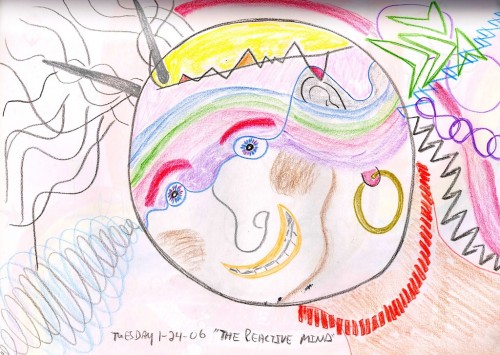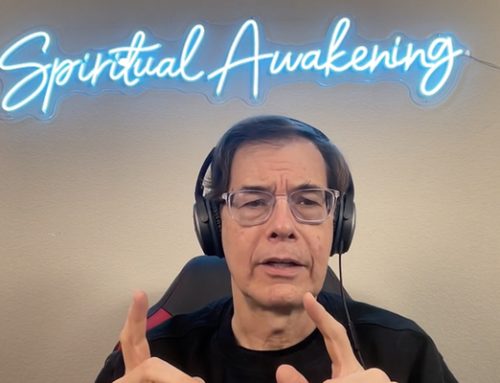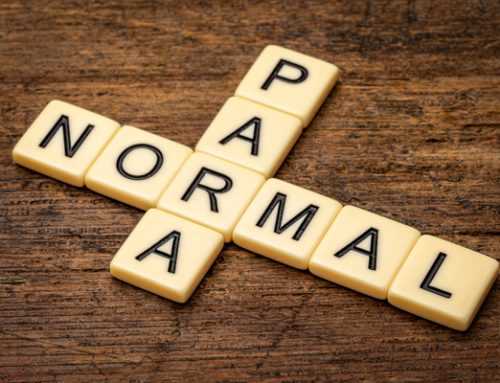Hello!
I hope the day finds you well. We have gentle rain this morning in our sunny San Diego homeland. Hopefully the recent patch job on little hole in my roof won’t leak and get my desk and paperwork all wet!but if it does, it will be fine. Just more reason for one of my mugs to feel valued as a rain-catcher.
Today, I’d like to progress further in our discussion of Brain~Mind Balance. We’ve covered a fair bit of ground now, progressing from cells to gesture on the road to better understanding why we think, feel and act the way we so often do. Today I will share more information about how the mind is programmed, and why so many suffer the reactive mind.
As the child is learning to read facial expression and body language, it is also learning to correlate facial expressions with the sounds that come with them. Among the first words a child learns are “Momma” and “Da Da”. To emulate such words requires that the child use it’s facial muscles to form the right shape of it’s mouth, vocal cords, and face, all of which requires the entire body for support.
Try standing with your weight balanced between the balls of the feet and heels and then say “No” as though you really mean it (like you would if a baby was about to touch something dangerous) and pay attention to the direction your weight shifts and your body moves. Then try saying “Yes” with a smile as though you really mean it and see which way your body moves.
If you and I speak the same language, your body will move forward and your abdominals will become active with your “No” and your body will move backward and become more upright with your “Yes”. This little exercise (for which there are many) is but a means of showing you that whenever you speak a word, or make a sound, your entire body is involved.
The word “No” brings the body into pronation. Pronation, if taken to its extreme, results in being in the fetal position, which is the physical equivalent of “No” or the body’s most primal defense posture. When we learn to say “No”, we learn the act of exclusion, and every part of our being responds to the mental command.
When we say “Yes”, our extensors fire and we move into supination, which is the functional opposite of pronation and results in upright posture with the abdomen and chest relatively open. “Yes” then, initiates inclusion.
Here, we see that the earliest words the child emits to signify the birth of an ego include the physical actions of including and excluding. Including and excluding are the basic survival functions of any single celled organism, which each of us begins life as. Just as a single celled organism must eat, which means to include, whatever we say “yes” to, becomes part of our being, just as though you’d eaten it! Additionally, whatever we say no to is excluded from our being, just as though we’d expelled it. Every cell must remove waste and reject that which is not life-affirmative.
In my explorations of emotions, I’ve concluded that there are only two base emotions from which all other emotions emerge in much the same way that there are only two essential energy states (yin and yang) from which all other possible combination of energy state emerge.
The base emotions are “Love” and “Fear”. To “love” means “to include”; to love someone is to include them in your being. “Fear” is the emotional driver behind exclusion; when you are afraid of a snake, you don’t want to include it in your being.
So, let’s recap the key points thus far so we retain clarity of concept before moving forward:
1. The ego begins forming at the time the child uses the words “yes” and/or “no”. The child now clearly distinguishes that it has it’s own boarder, barrier and self-definition.
2. The child has learned how to express the principle of both inclusion and exclusion through body language well before it can speak the words, so it already has a behavioral understanding of the meaning of the words.
3. The muscles of the face and mouth have a significant influence on the entire biology, with particular significance to the motor system of the body, which expresses correlating behaviors or actions.
4. The child’s model for “inclusion or loving and exclusion or not wanting that form of love” is it’s parents and siblings.
5. The child’s mind is in a state similar to that of an adult sleeping and has no defense against what it does or doesn’t learn. It literally downloads every bit of information coming by way of it’s five senses. This forms the basis of it’s mental-emotional operational software.
This download phase goes on for the first seven years of it’s life, after which, the brain begins to prune any neurons that are not regularly used to keep the brain from growing to the point of suffering strangulation in the skull as well as protecting the child from having too many junk programs. Junk programs decrease survivability because they create inner-conflict and confusion, decreasing the speed and conviction necessary to make its own survival decisions.
The act of thinking and/or saying “Yes” is excitatory to the motor system. If you were walking blindfolded and asked me, “is it safe to keep going?” and I said “yes”, your motor system would interpret the affirmation “yes” as “keep going”. If I said “No”, the motor system would respond with inhibition and you would either slow down or stop all together. If the command “NO!” were strong, complete inhibition would be the likely result.
To hug someone is to include them in your being and requires motor excitation/affirmation to draw the person you are hugging into your personal space or sphere of influence. If someone tries to hug you and for any reason you don’t feel safe hugging them, your “NO!” will be expressed as withdrawal or pushing them away from you – excluding them form your personal space or sphere of influence.
The child’s right brain – the brain of wholeness and connection – is the dominant hemisphere for the first 4 years; there is a slow, progressive tendency to activate the left brain – the brain of logical process or logical deduction and linear though processing – which progressively occurs from age 4, but begins reaching stride between age 7 and 10.
If a child doesn’t have an environment that favors “unbound” creativity and play for the first 7-10 years of it’s life, it can’t effectively determine how “information or ideas” fit into the larger scheme of life! This is exactly why Rudolf Steiner’s Waldorf School system avoids left-brain teaching methodology (which is what is used in most all public school systems beginning from kindergarten onwards!); they use story, song, dance, acting and artistic expression to learn via teaching stories so that they can feel the stories and incorporate them into their whole being. The moment you begin teaching a child how to read, you begin linear, left-brain programming. Why? Because all letters, which are “signs” are exclusive. To know what an “A” is requires that you know it isn’t “B, C, D, E!”
If a child learns to act, dance, or express a story, it’s entire being experiences the story, allowing it to fully feel what the story imparts to it’s being. Because a healthy child’s right brain is functioning optimally, it can and does make the connection between each aspect of the story and the whole story to the rest of it’s experience of life as a living experience.
For example, if a child lives near a creek and plays there, it will know that water is wet and often cold and usually has plants, fish and other creatures in it. Yet, if the child lives in the city and hasn’t been exposed to (it’s!) nature and is taught to read before it has developed a well rounded experience of it’s environment, it becomes susceptible to believing what it reads without reference to the truth of it’s nature.
For example, if a child is taught to read at age 4 or 5 (which is very common!) and it is read a story or reads a story in which water is said to be full of ugly gremlins and is boiling hot and will burn you, it is very likely to believe what it has read or heard – the child has no “living reference” to how water really is or how it functions in nature. This one story, if believed, can lead to a life of morbid fear of water. Water then, becomes akin to the boogie man!
How Are You Doing?
Now is a good time to pause for today so I don’t overload your brain with left-brain information you can’t effectively incorporate into your being. To begin taking advantage of the teachings I’m sharing here, I suggest the following:
1. Look back through your own life history and see if you can identify when you first began (or were forced to) using your left-brain, which usually begins by learning to read. How much unobstructed play-time had you had in years prior to that time? This informs you as to how well developed your right-brain was before activating the left brain.2. Look into how well you do with new or novel experiences:
a. How willing are you to try new foods, such as eating sea urchin or sushi with a raw quail egg on top? How willing are you to try new sexual experiences; how often do you use the missionary position (and boar you women to death guys!) instead of being like a child and exploring the territory?
b. How resistant are you to changes in technology, such as the need to learn new computer programs?
c. How often do you feel fearful when you meet someone new and have a flood of negatives run through your head before you even know the person?
d. How would you react if you were asked by a teacher or your boss at work to draw your job description instead of writing it out?
3. Look into yourself and ask, “How would I feel if left alone in the woods?”
4. How often do you sit idle, fidgeting, and doing a lot of nothing at all at school or at work if you aren’t being told exactly what to do?
5. How often do you naturally intuit ways of solving problems in your life on your own before you let your life fall into shambles and then run back to mommy, daddy, or some other parent or authority figure and ask them to solve your problems?
6. How often do you make decisions regarding your diet and the clothes you wear based on what other people are doing or saying or what you read in books, hear on the radio, or see on TV instead of listening to your body or taking council with our own soul or “inner-voice” (which is a right-brain technology by the way!)?
7. How often do you become skeptical or derogatory when you see others being loved or are offered love by someone else?
The answers to these questions will point you in the direction of your base programming.
If your right-brain was optimally developed, your reaction to and answers to the questions above will be affirmative of your own capacity to create, include, and feel safe alone in most situations. You will have the capacity to make connections and create safety and security for yourself because you will have an innate sense of how nature and life work functionally. This kind of person naturally asks good questions and gathers the necessary information and experiences needed to make a decision.
Those with excess left-brain information are generally exclusive in their mode of living and being and often have a “show me” or “prove it” attitude. This can be challenging for them because by the time they muster the courage to participate in or create novel experiences for themselves, they are way behind the others who have whole-brain-body mental-emotional function.
When they find this out, it incites a competitive attitude in many of them and leads to a lot of potentially painful self-judgment, self-deflation, and diminishes self-esteem. Their safety and security is usually easily threatened because they don’t have the inner-resources to make connections to the reality of the flow of life and natural inter-connectedness of life in nature. When they feel challenged, they either hit the books, look for authority figures (which are usually chosen from the same mindset they have and therefore are likely to reinforce their imbalance) to help them, or, they give up and often become apathetic.
It may interest you to know that our standards of education are now the lowest for children they have ever been; our children are getting less and less functional and more and more disconnected from the experiences that ultimately create safety and security. We now have the highest rates of illness, obesity, disease and suicide among children and teenagers than every in recorded history.
We now have the highest consumption of medical drugs and psychotropic drugs (mostly proscribed by psychologists) among children than ever in history.
We have the highest rates of attention deficit and hyperactivity behavior ever in history. Which by the way, researchers have found can often be cured by a weekly trip into nature where children are offered, unbounded play! Where they can gain a sense of connection to the “nature that they are”!
For those of you who feel you are ready to heal from the kind of childhood challenges I’ve outlined here, PPS Success Mastery Lesson 1. How To Find and Live Your Legacy and my 1-2-3-4 For Overcoming Addiction, Obesity and Disease programs are your first step toward self-exploration and self-healing should you decide to use the CHEK system or approach.
In our next edition, I’ll talk more about the reactive mind and share more observations and methods for self-healing.
I hope that this is useful as you watch and observe your own mind and nature.
Love and chi,
Paul Chek





